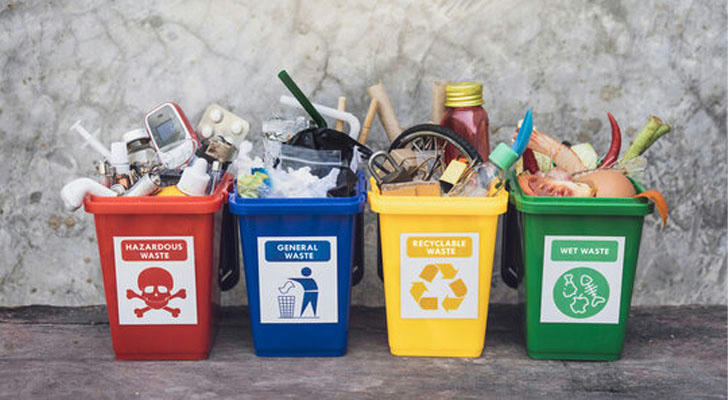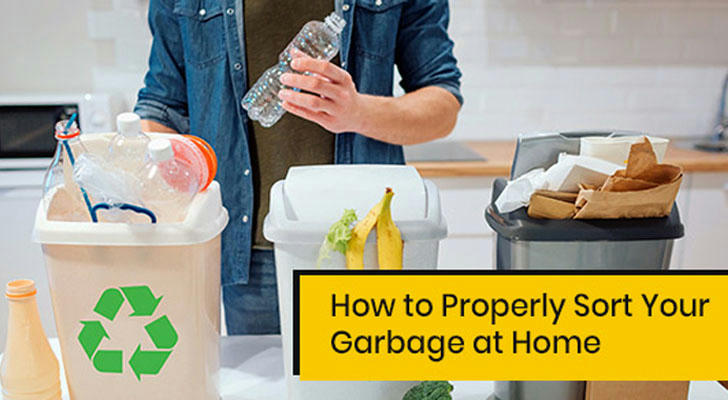The Power of Waste Sorting: A Key to Environmental Protection 🌎
Waste sorting is a crucial practice that plays a significant role in environmental protection 🌟. As the global population continues to grow, so does the amount of waste generated 📈. Effective waste management is essential to mitigate the negative impacts of waste on ecosystems and human health 🌿. By categorizing waste into different types, individuals can significantly contribute to reducing pollution and conserving natural resources 🌟.

Introduction to Waste Sorting
Improperly disposed waste can lead to severe environmental issues, including pollution of waterways 🌊, soil contamination 🌴, and greenhouse gas emissions 🌫️. For instance, organic waste decomposing in landfills produces methane, a potent greenhouse gas ⛽️. On the other hand, sorted waste can be recycled, reused, or disposed of in a manner that minimizes environmental harm 🌈. This not only helps in reducing landfill waste but also conserves raw materials and energy 💡.
Environmental Impact of Waste Sorting
The environmental impact of waste sorting is profound 🌟. By recycling and reusing materials, communities can significantly reduce their carbon footprint 🌟. For example, recycling aluminum cans uses 95% less energy than producing new aluminum from raw materials 💡. Moreover, composting organic waste creates nutrient-rich soil that supports sustainable agriculture 🌱. This approach also helps in preserving biodiversity by reducing pollution and conserving natural habitats 🐝.
Types of Waste and Sorting Methods
Waste can generally be categorized into several types 📝:
•Organic Waste 🍃: Includes food scraps, yard trimmings, and other biodegradable materials. This type of waste can be composted to create nutrient-rich soil 🌿.
•Recyclable Waste ♻️: Consists of materials like paper, plastic, glass, and metal. These materials can be processed into new products, reducing the need for virgin raw materials 📦.
•Hazardous Waste ⚠️: Includes items such as batteries, electronics, and chemicals. These require special handling to prevent environmental contamination 🚮.
•Non-Recyclable Waste 🚮: Items that cannot be recycled or reused, often ending up in landfills 🌪️.

Benefits of Waste Sorting
The benefits of waste sorting are multifaceted 🌈:
•Conservation of Resources 🌿: Recycling helps conserve natural resources by reducing the need for extracting, processing, and transporting raw materials 🚚.
•Energy Savings 💡: Recycling often requires less energy than producing new materials from raw resources 🔋.
•Reduced Pollution 🌊: Proper disposal of hazardous waste prevents environmental contamination, while recycling reduces greenhouse gas emissions associated with production processes 🌫️.
•Economic Benefits 💸: Recycling can create jobs and stimulate local economies 📈.
Practical Tips for Daily Waste Sorting
Implementing waste sorting in daily life is straightforward 📝:
•Use Separate Bins 📦: Designate bins for different types of waste to make sorting easier 📈.
•Educate Family Members 👪: Ensure all household members understand the importance and methods of waste sorting 📚.
•Participate in Community Programs 🌟: Engage with local recycling initiatives and community clean-up events 🌟.
•Reduce Single-Use Items 🚫: Minimize the use of single-use plastics and other non-recyclable materials 🌟.
•Buy in Bulk 🛍️: Purchasing items in bulk can reduce packaging waste and save money 💸.
•Choose Products with Minimal Packaging 📦: Opt for products with biodegradable or recyclable packaging to reduce waste 🌿.

Global Initiatives and Success Stories
Many countries have implemented successful waste management strategies 🌎:
•Sweden's Waste-to-Energy Program 🔥: Sweden efficiently converts waste into energy, significantly reducing landfill waste 💡.
•Japan's Recycling Culture 🎉: Japan has a highly developed recycling system, with a strong emphasis on community participation 🌟.
•Australia's Container Deposit Scheme 📦: This program encourages recycling by offering refunds for returned bottles and cans 📈.
•Germany's Green Dot Program 🌿: Germany's packaging recycling system ensures that manufacturers are responsible for recycling their packaging waste, promoting sustainable packaging practices 📦.
Community Engagement and Education
Community engagement is crucial for successful waste management 🌟. Educating children and adults alike about the importance of waste sorting can foster a culture of sustainability 📚. Schools and community centers can organize workshops and events to raise awareness and encourage participation 🎉. Additionally, incorporating environmental education into school curricula can help shape future generations' attitudes towards waste management 🌱.
Conclusion
Waste sorting is a simple yet powerful tool for environmental protection 🌟. By adopting this practice, individuals can contribute to a cleaner, healthier planet 🌎. As communities around the world continue to implement effective waste management strategies, the collective impact will be substantial 🌈. Embracing waste sorting not only benefits the environment but also fosters a culture of sustainability and responsibility 🌟. By making conscious choices in daily life, everyone can play a role in shaping a greener future 🌱. Together, these efforts can lead to a significant reduction in pollution, conservation of resources, and a healthier environment for generations to come 🌟.
